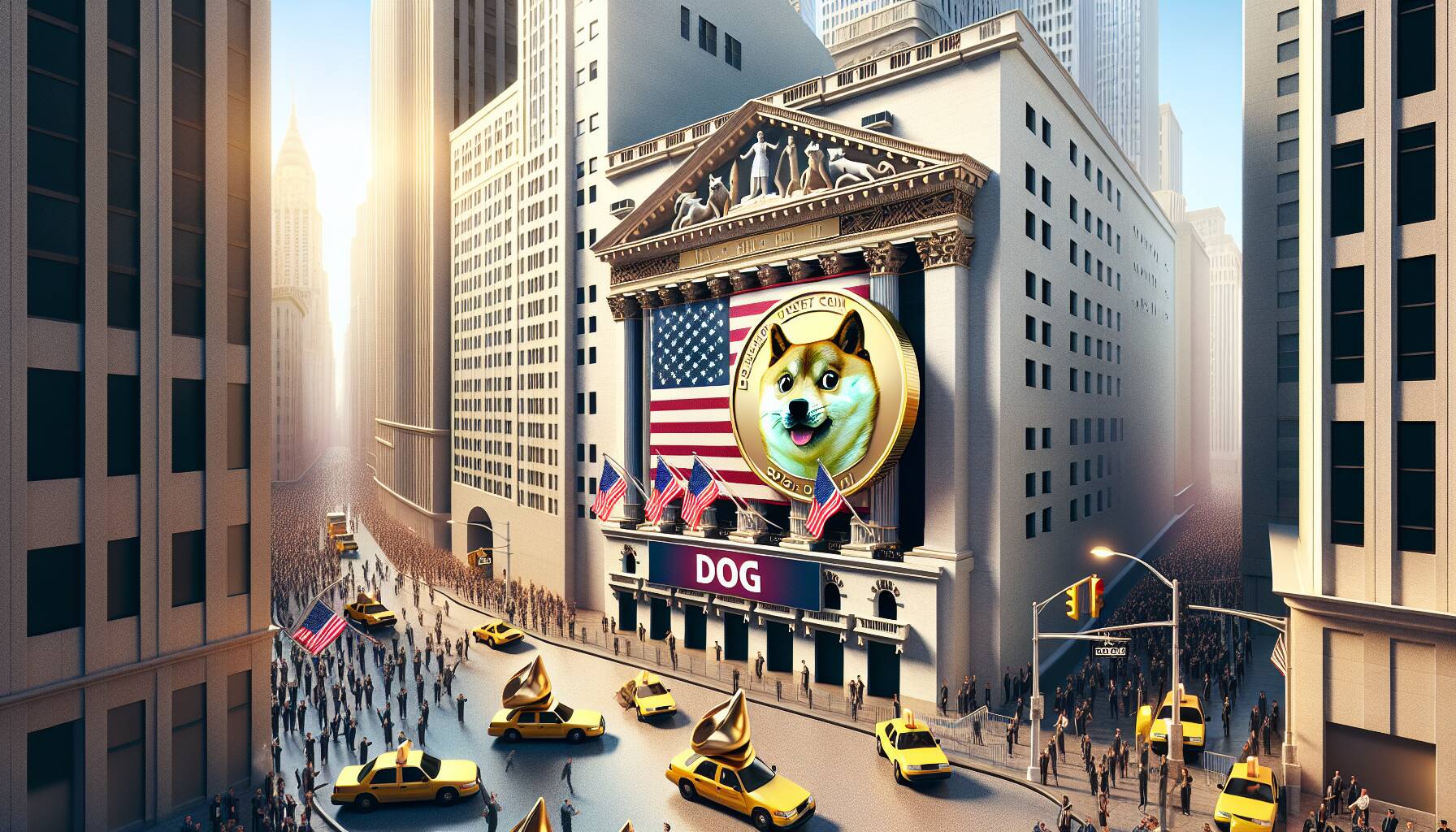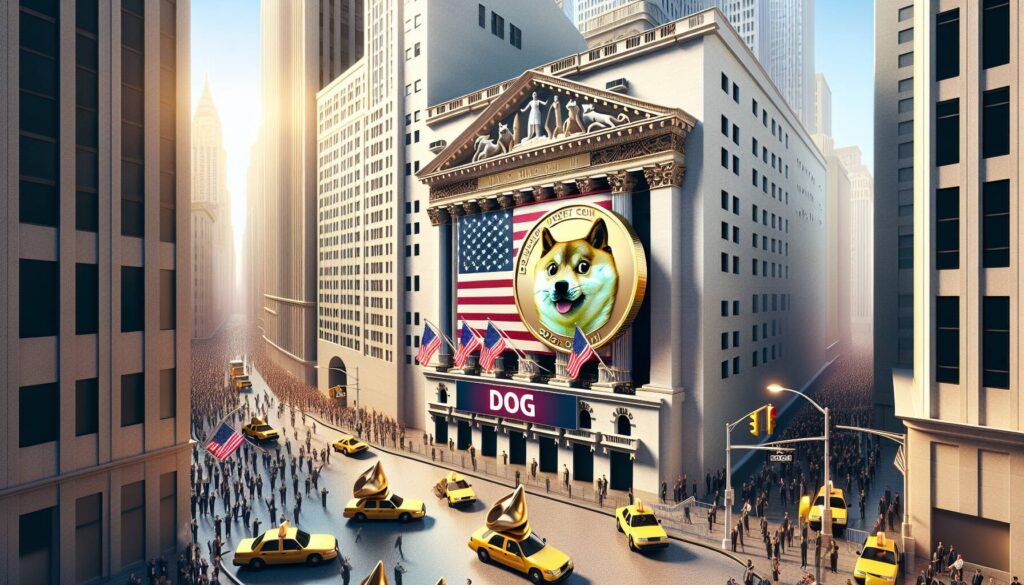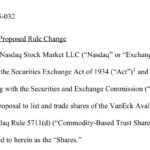The cryptocurrency landscape is buzzing with excitement as three prominent asset managers make strides to introduce the first-ever spot Dogecoin ETF (DOGE) to the U.S. market. Joining the fray are leading firms 21Shares, Bitwise, and Grayscale, marking a significant milestone in the realm of digital assets. On Thursday, Switzerland-based 21Shares filed an initial S-1 application with the U.S. Securities and Exchange Commission (SEC), a crucial step toward potentially launching this innovative financial product.
The proposed fund will be custodied by 21Shares in partnership with Coinbase, one of the largest cryptocurrency exchanges in the world. While the management fee, ticker symbol, and the specific exchange for listing have yet to be disclosed, it’s anticipated that the chosen exchange will need to submit a 19b-4 document to the SEC for formal approval, which is essential for moving forward in this regulatory landscape.
“If approved, this DOGE ETF would be a groundbreaking venture as it would be the first ETF tracking a meme-based cryptocurrency,”
noting the evolution of Dogecoin from a lighthearted joke into a serious player in the crypto market. With a current market cap of approximately $23 billion, Dogecoin has solidified its position as the ninth-largest cryptocurrency, competing squarely with traditional financial assets.
This latest development is further amplified by 21Shares’ partnership with the Dogecoin Foundation’s corporate arm, House of Doge, which will assist in marketing the fund. The cultural significance of Dogecoin has even inspired the U.S. government’s latest initiative, the Department of Government Efficiency, humorously abbreviated as DOGE, led by the influential Elon Musk. This connection showcases just how far Dogecoin has come, resonating deeply within tech and pop culture.
As the landscape evolves, stakeholders and investors alike are keenly watching how this endeavor unfolds, particularly the implications of a DOGE-focused ETF on the broader cryptocurrency market. The future of this proposed fund could set a precedent for other cryptocurrencies with similar origins.

The Introduction of a Spot Dogecoin ETF in the U.S.
The recent push for a spot Dogecoin ETF marks a significant development in the cryptocurrency market. Here are the key points regarding this initiative:
- Partnership of Asset Managers:
- Three crypto-focused asset managers: 21Shares, Bitwise, and Grayscale are involved in the initiative.
- 21Shares has submitted an initial S-1 filing with the U.S. Securities and Exchange Commission (SEC).
- Custodianship and Management:
- The fund would be custodied by 21Shares and Coinbase.
- The management fee, ticker, and listing exchange are yet to be announced.
- Regulatory Process:
- Whichever stock exchange is selected must file a 19b-4 document with the SEC to finalize the submission.
- This filing will tie the SEC to a decision deadline regarding the ETF approval.
- Marketing Partnership:
- 21Shares has formed a partnership with the Dogecoin Foundation’s corporate arm, House of Doge, to help market the fund.
- Impact of ETF Approval:
- If approved, the DOGE ETF would be the first to track a meme coin, further legitimizing cryptocurrency investments.
- The popularity of Dogecoin could enhance interest in other cryptocurrencies, affecting investment strategies.
- Current Market Position:
- Dogecoin (DOGE) is currently the 9th largest cryptocurrency by market cap at approximately $23 billion.
- The emergence of the DOGE ETF reflects a growing acceptance of cryptocurrencies in traditional finance.
Emerging Trends in the Crypto ETF Market: The Spotlight on Dogecoin
The recent developments surrounding the introduction of a spot Dogecoin ETF signal significant competitive dynamics in the cryptocurrency asset management arena. As 21Shares joins heavyweights Bitwise and Grayscale, the entry of a Switzerland-based player adds an interesting layer to the ongoing race for regulatory approval. This coalition not only aims to innovate the crypto investment landscape but also poses intriguing advantages and challenges for stakeholders involved.
Competitive Advantages: The collaboration between these asset managers showcases a strategic consolidation of resources and expertise, boosting their chances of SEC approval. Having multiple established entities backing the proposal enhances credibility and creates a diversified support system during the regulatory review process. Furthermore, the partnership with the Dogecoin Foundation is set to elevate marketing efforts, potentially attracting a dedicated fanbase that identifies with the dog-meme culture that underpins DOGE. If the ETF receives the green light, it would not only be a pioneering endeavor but could also tap into a vast market of meme-driven investments, appealing to more casual investors.
Disadvantages and Challenges: Despite the optimism, several hurdles remain. The uncertain management fee structures and undeclared listing venues raise questions about the transparency and operational efficiency expected by prospective investors. Moreover, this ETF’s reliance on the meme coin market, typically characterized by volatility, may deter risk-averse investors. There’s concern that outside environmental factors, such as regulatory issues or market trends, could derail the fund’s potential success.
Who Stands to Gain or Lose? Should this ETF gain approval, it could significantly benefit retail investors looking for exposure to cryptocurrencies through a regulated vehicle. It particularly resonates with younger audiences familiar with meme culture, creating an enticing opportunity for those who may have been hesitant to dive directly into crypto trading. However, seasoned investors might perceive the introduction of a Dogecoin ETF as an indication of market irrationality, given DOGE’s origins as a joke rather than a serious cryptocurrency. This situation may lead to a divided investor sentiment, where some perceive it as an innovative investment avenue while others label it as speculative fluff. Moreover, financial advisors might find themselves having to navigate these contrasting perceptions when guiding their clients’ investment strategies in this evolving climate.

















